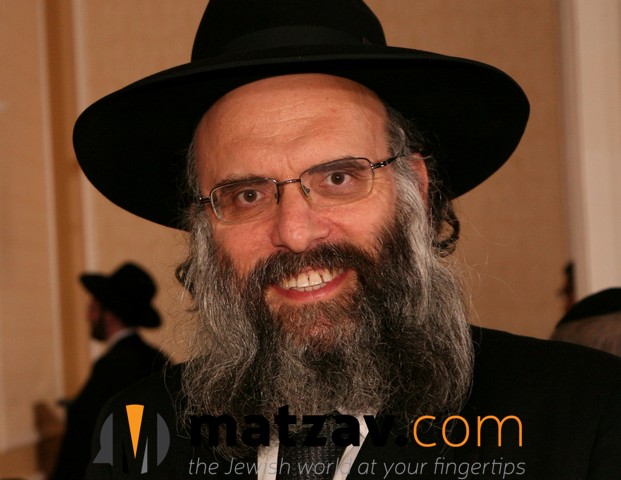
By Rabbi Yehoshua Berman
ואלה תולדת אהרן ומשה ג:א שכל המלמד את בן חברו תורה מעלה עליו הכתוב כאילו ילדו רש“י
Last week, we fulfilled takanas Ezra to read the curses of Sefer Vayikra before Shavuos (Megilla 31b). But what is the connection between parshas Bamidbar and Shavuos? True, there is a discussion in Tosafos (ibid.) if it is ok to be interrupt between parshas Bechukosai and Shavuos, but there definitely is a connection.
The connection, or at least one of the connectons, is what Rashi says on the pasuk, “V’eilehtoldosAharonv’Mosheb’yomdiber Hashem es Moshe b’Har Sinai”. The next pasuk only mentions the sons of Aharon which shows that teaching someone Torah is like fathering him. And when did the sons of Aharon become the progeny of Moshe? On the day that Hashem spoke to Moshe on Har Sinai – the day of Matan Torah – because it was then that he taught them what he learned from Hashem.
Even on the superficial level, this is an amazing concept. The Gra says that this comparison to fathering a child is not mere allegorical expression. It is literal. Just as there is exists a birthing process on the physical plane, so too is there a spiritual birth process. The Mishna in MasechesBavaMetzia (33a) says that returning a lost object to one’srebbi takes precedence over returning a lost object to one’s father, because a father brings him to Olam Ha’zeh and his rebbi brings him to Olam Ha’Bah. What this shows is that just as one’s entire existence in Olam Ha’zeh is due to his parents having brought him into the world, so too is existence in Olam Ha’Bah only possible through Torah. The Torah is what gives one life. And this comes about through one’s rebbi.
Now that Torah sheh’b’alpeh is written down, it is possible to get this – to a certain extent – by learning from a seifer; and access thereto is not as critically limited to getting it from a rebbi as was in the time when Torah sheh’b’alpehwas transmitted orally.
In addition, there is a deep point here.
Biological reproduction is essentially an escape hatch from the curse of “b’yomacholchamimenumostamus(Breishis 2:17).” The day being referred to in the pasuk is yomoshelHa’Kadosh Baruch Hu (e.g. 1000 years [minus the 70 that Adam ha’Rishon gave to DovidHa’Melech). But still, the consequence of death really should be a dead-end in this world. However, the ability to produce progeny means that a part of Adam Ha’Rishon survived and continues to survive. So too is it with every person in the world. The curse of mostamus applies to everyone. But there is an escape hatch. A person’s progeny provide him with a continuity.
What this means is that all of human existence is one chain of life. An unbroken nexus. It’s not the same body – it is in a constant state of flux of assuming different particular forms – but it is nevertheless a linkage of one continuum of life. Literally.
The k’iluyaldo of Torah – the birth process of teaching talmidim – is also an unbroken chain of life in the spiritual realm. Not going back to Adam Ha’Rishon, but to Moshe Rabbeinu on Har Sinai. It means that there is no absolute severance at any point in the chain. A part of the spiritual life-energy of each rebbi is passed on to the next generation.
Chassidic thought has it that a person can have two types of rebbeim: a rebbi that he learns from in person during the rebbi’s lifetime, and a Himmeldikehrebbeh, even if he did not live in that chacham’s lifetime at all. By learning hisdivrei Torah, one can become his talmid. That means that we can all be talmidim of Rashi. And you can also be atalmid of the Rambam, Rabi AkivaEiger…anyone you want; who not?! Of course, this is only to the extent that we make ourselves their talmidim by investing the appropriate effort to understand and absorb what they say.
The most direct way, though, that one connects to this continuum of spiritual vitality going all the way back to those who heard Anochi Hashem Elokecha is from the living mesorah – by learning and absorbing from a rebbi directly. AsRabbeinuYonah says (Avos 1:1), even after Ravina and Rav Ashi completed putting down Talmud Bavli into the written word, there still is a necessity of Torah transmission from Rebbi to talmid in every generation.
This provides us with a new perspective on kolgadolv’loyasaf – the sound of Torah that was transmitted at HarSinainever ceases, because the rebbi to talmid connection in every generation perpetuates it as one continuum of spiritual vitality.
Ultimately, this means that we are all talmidim of Moshe Rabbeinu. There’s a Gemara in MasechesMenachos that says the expression “talmidim of Moshe Rabbeinu” is meant to exclude the tzedukim apostates. The Medrash (TikuneiZohar 114a) says “ispashtuseid’Mosheb’choldorv’dor”. The influence of Moshe Rabbeinu is in every generation. This link of rebbi to talmid means that we have an unbroken chain of spiritual vitality going all the way back to Moshe Rabbeinu on Har Sinai. Within every generation’s Torah transmission there exists a piece of that influence of Moshe Rabbeinu.
Learning Torah is not just a serious business. It is a serious business – kiheimchayeinuv’orechyameinu, and without it, chalila, the opposite. But it is not just a serious business, it is also a tremendous, glorious endeavor. And it is only Torah that has this incredible quality. Someone who devotes himself to avodah or chesed the whole day, even though his zechus may be very great, he does not necessarily have this. Torah gives us this! This glorious, existential reality of one, unbroken continuum of spiritual life-energy that connects all the way back to Moshe Rabbeinu on Har Sinai.
(Audio available here)
~
קח את הלוים תחת כל בכור בבני ישראל ג:מה
Because there were only 22,000 Leviim to the 22,273 bechoros, 273 of the latter had to make a payment of 5 shekalimto redeem themselves – which had to be given to Aharon and his sons, as the pesukim explicitly state. I always understood that this whole process was unrelated to the mitzvah of pidyonha’ben – that, although the mitzvah ofpidyonha’ben is recorded at the end of parshas Bo and was told to Moshe on the day they left Mitzrayim, it only went into effect at a later point. However, at the end of his HilchosBechoros, the Rosh explicitly says that what was going on here was the mitzvah of pidyonha’ben. That being the case, what happened to the obligation of the 22,000? How come they did not have to make the 5 shekalim payment?
The word pidyon – as it relates to korbanos and hekdesh items – means to transfer the kedusha off of that item on to something else (such as money). When we are dealing with pidyonha’ben, we need to understand how exactly are we to define the “redemption” that is happening? Some Achronim seem to say that the mitzvah of pidyonha’ben is really not a pidyon in the strict sense of the term. You really are not redeeming the first-born; rather, it is purely a monetary obligation that the Torah imposes upon the father of the bechor (or the bechor himself if the father did not do it) to pay to a kohein (for example, see ShulchanAruchYorehDeiah in BiurHa’Gra 305:17). Like any other monetary obligation.
However, this cannot be taken at face value. The Gemara in MasechesBechoros (47b) says that if a Kohein died within 30 days of the birth of his chalal son (e.g. the Kohein married a divorced woman), that boy will have to redeem himself. The Rosh explains – and this is how the halacha is paskened in Tur and ShulchanAruch (YorehDeiah 305:19) – that all he has to do is set aside the requisite 5 selaim, and he then keeps them for himself. This is similar, says theRosh, to the case of a Kohein who has only one daughter who married a Yisrael, and from that marriage the Koheinhas a grandson who is a Yisrael. If the Kohein grandfather dies and leaves a batch of tevel as part of his yerusha to his grandson, that grandson needs to separate terumah from the tevel but he gets to keep it for himself.
What is evident, then, is that the mitzvah of pidyonha’ben has two facets to it: a) the act of redeeming a first-born child, and b) the monetary right that a Kohein has to the money (for example, if a Kohein grabs the 5 selaim that a father set aside to redeem his son with, Beis Din will not take it away from the Kohein). Usually these two components stick together, but in the case of the chalal son of a Kohein, there is a split between the essential pidyonaspect from the monetary aspect.
The first-born chalal has to redeem himself because he is a zar – a full-fledged non-Kohein. As far as the monetary aspect is concerned, though, he does not have to give the 5 selaim that he used to redeem himself to a Kohein, because he is the heir of his father who was a Kohein. Had his father been alive, his father would have redeemed him and kept the money for himself. That monetary right is fully inheritable. If all there was to pidyonha’ben is a monetary obligation, well, in this case of the chalal son of a Kohein, there is no monetary obligation because he’s going to keep the money for himself anyway! Yet he still has to redeem himself. Clearly, then, there exists an inherent pidyon obligation irrespective of the monetary-obligation component of it.
If pidyonha’ben was merely a monetary obligation and that’s it, it would be impossible to understand how the 22,000 bechoros that were redeemed by the 22,000 Leviim were exempted from this obligation. Now, though, that we’ve clarified that pidyonha’ben is a mitzvah in of itself to redeem the first-born – which carries an additional, monetary obligation as well – we can venture to explain how those 22,000 were exempted from redeeming themselves with the regular 5 shekalim.
A bechor has a particular status. The AruchHa’Shulchan says an incredible chiddush: until a father redeems hisbechor, he is not allowed to use him for any work (e.g. as a weight on one side of a scale). Everyone asks on theAruchHa’Shulchan from the explicit Gemara in MasechesBechoros (9b) that excludes bechoradam from the prohibition of gizahv’avodah (shearing and work). In any event, according to the AruchHa’Shulchan, the distinct status of a bechor is an actual kedusha that needs to be removed through pidyon. There is a Seforno that also implies that the human bechor has actual kedusha. Even if you don’t want to posit that bechoradam has actual kedusha, he definitely has a distinct status called bechor. For example, if not for the sin of the eigelha’zahav, the first-borns would have been involved in some way or another in the Mishkan/BeisHa’Mikdash. The selection of Aharon and his progeny to serve as Kohanim was determined irrespective of that, so it’s not as if the lack of the sin of the eigelha’zahav would have changed that; but in some form or another the first-borns would definitely have been involved. That is obviously an expression of their specialized status.
And it is that specialized status to which the mitzvah of pidyonha’ben pertains. Pidyonha’ben is an act of removing that status (not regarding the laws of inheritance, only regarding the specialized status as described above). It happens to be that the pidyon act of removing that status entails a monetary obligation to a Kohein, but it is the neutralization of that status that is the essential mandating force of this mitzvah.
Now we can understand why those 22,000 bechoros did not need to pay 5 shekalim to a Kohein. Their specializedbechor status was neutralized via being “swapped” with the 22,000 Leviim. True, that is obviously a horaasshaah – a one-time manner of doing it that does not carry any application subsequent to that event – but it was a horaasshaah that functioned in appropriate accordance with the basic mechanism of how pidyonha’ben works and what it is meant to do. By being swapped with the Leviim, their special bechor status was removed. Naturally, then, there was no more mitzvah of pidyonha’ben left to do, so of course there is no reason why they should have had to pay any money to a Kohein. The 273 extra bechoros, though, who were not able to be swapped with a Levi, were not able to have their bechor status neutralized through this horaasshaah mechanism, and they therefore still had the mitzvah of pidyonha’ben on them – obligating them to pay 5 shekalim to a Kohein.
(Audio recording available here)
~
Shavuos
The Gemara in Maseches Shabbos says an example of notrikon (acronym) is the word Anochi. The letters of the wordanochi stands for anahnafshikesivasyehavis. Rashi explains that anahnafshi means anib’atzmi, that Hashem is saying I myself wrote and gave the Torah.
The ChasamSofer (in his drashos for Rosh Ha’Shana) cites the Rokeaich who says that the title of a sefer should have the author’s name somehow contained therein. This acronym of anochi, says the ChasamSofer, is precisely that. Since anochi marks the beginning of KlalYisrael formally receiving the Torah, it is effectively the title of the Torah.
In the sefarim there is another explanation given for anahnafshi: that Hashem is saying, “My nefesh is also part of what is written and given in the Torah.” In the context of speaking about Ha’Kadosh Baruch Hu, the meaning ofnefesh is as we find in the pasuk “imyeishesnafshechem”. Meaning, ratzon. In the AseresHa’Dibros, and the Torah as a whole, Hashem gave over, kavayachol, His ratzon. What that means is that the Torah is the vehicle through which we connect with Hashem. Furthermore, it means that if you want to know about Hashem – what it is that He wants from the creation – the only portal to that knowledge is the Torah. Torah is not just a set of laws. Every word in Torah carries “nafshi”, ratzon Hashem.
The statement of al levavecha is talking about the mitzvah of remembering Torah. Yonasan ben Uziel says kesivin al luachlibchon – written on the writing-board of your heart. It means that Torah knowledge is supposed to be retained. The Brisker Rav said that it is a barometer of how well one must know Torah. Something that is written out in front of you, you don’t need to think to recall it; it’s right there!
In Toldos Adam, Rav Chaim Volozhiner’s description of the Gra is cited. How the Gra was absolutely phenomenal in every way. For example, he would have an aliyasneshama (a conscious experience of his soul ascending to Heaven) every night – without employing the utterance of special names of Hashem (the Besh”t had aliyasneshama withhazkarasSheimos) – and during his sleep he would supplement his Torah knowledge. And on and on. Someone asked Rav Chaim Volozhiner, “But your brother Rav Zelmeleh (who was niftar young) also knew kolha’Torahkulah?!” Rav Chaim responded, “There’s no comparison!” He explained: Rav Zelmeleh knew kolha’Torahkulah the way everyone knows Ashrei, with total fluency. But if I ask you what word comes before u’gvurosecha, you have to think about it to get the answer. You have to go back to the beginning of the pasuk in your mind and get to that point in order to remember. But the Gra, he was on a completely different level. His fluency was so great that he knew the totality of Torah backwards as well as he knew it forwards! This description of the Gra is a true embodiment ofkasveim al luachlibecha, as if the text is written down right there in front of him.
In general, when it comes to halachos that pertain to writing, regular writing suffices to comprise the kesivah and it does not have to be engraved. However, to truly fulfill kasveim al luachlibecha – writing the Torah on your heart – it really needs to be a chakikah; engraved. Just writing with ink doesn’t sink in. Halevai, though, that we would even write the words of Torah on our hearts!
Practically speaking, how does one go about engraving divrei Torah on his heart? There are two components, and both are necessary. First, you need to work to understand the divrei Torah to the best of your ability. The better you understand a sugya, the deeper in it goes, and it’s retained better. When a person really puts all his energies into asugya, it is possible that even ten, twenty, thirty, or even forty years later he will still remember it. If one just glosses over divrei Torah, though, then the divrei Torah might gloss over him. The second component is copious review. You need both; one without the other just won’t do it.
RabbeinuChananel brings in Maseches Rosh Ha’Shana (34) a GemaraYerushalmi: by every Yomtov the sair (goat offering) is identified as l’chatas, but by Shavuos it just says sairizim without the word chatas. Why? To convey, “Since you accepted upon yourselves the yoke of Torah it is as if you never sinned.” We see, then, that the year contains two paths of atonement for sins: one is during the YamimNoraim and the other is on Shavuos. Relative to the concerted effort associated with the avodah of YamimNoraim, the forgiveness that we receive on Shavuos is a tremendous gift. Just by dint of accepting the yoke of Torah, it is granted to us. The Gemara says that Rabi Eliezerholds that on other YamimTovim you don’t have to have a festive seudah – you can instead spend practically the whole day in Torah and teffilah. However, when it comes to Shavuos, all agree that one must have a festive seudah. The Rokeaich says that the reason for this universally-accepted, heightened component of simcha on Shavuos is the gift of forgiveness that we are given on Shavuos.
Parenthetically, the three times of the year that the Gemara says everyone agrees that we require lachem (for one to have a festive seudah) are Shavuos, Purim, and Erev Yom Kippur, and the Gra explains that all of them have to do with the quality of Torah that is associated with the day.
When accepting a resolution, it should be specific, concrete, and practical. Not a castle in the sky. It needs to be something that one really has the ability to maintain. Our abilities are far, far removed from anything resembling that of the previous generation. The goals we set for ourselves need to be modest in accordance with our modest capabilities.
Bear in mind that giving examples of possible resolutions carries a danger that the listener’s mind will become constricted from thinking creatively. Really, each individual needs to think for himself what goals are appropriate for him. With that caveat in mind, here are two examples: Establishing a seder, or a certain amount of time for learning, that is chokv’loyaavor, that no matter what happens on any given day, that set amount will never move. The second example is to have a concrete goal of something you are going to accomplish in learning. Regarding this type of goal, it may be best to split it up according to the natural periods by which the year is divided and structured, wherein you set a different goal for each time period.
Regarding what to do on Shavuos itself, there are different approaches. Some say that one should go into Shavuoswith a cheshbon. Meaning, learn during whatever time will be the most productive, and sleep the other time. Also, don’t wear yourself too thin because there is life after Shavuos too! Isru Chag – right after we have received the Torah – is the time to start learning with renewed vigor, and not to be like a child running from his desk when the bell rings.
My son told me that he prefers to stay up all night motzaeiShavuos. Why? “Because we just got the Torah, so what am I going to do with it, go to sleep with it? I want to learn it!” Ok. Another approach, and I am not saying that you should necessarily do this, but some say – and there certainly is good reason to say that it is worthwhile – that during the 24 hours of Shavuos one should put every last ounce of his energies into learning, until one has used up all one’skochos and even more; because this is the day of Matan Torah, the day to engrave the Torah on our hearts, just like then when they heard Anochi Hashem Elokecha and it was engraved on their hearts! And what will be with Isru Chag? You’ll take a nap; it’s not so terrible. Everyone should be zocheh to kabalasha’Torahb’ahavau’b’simcha!
~
Quote of the Week
“If someone was once your rebbi, then he still is your rebbi. And if he isn’t your rebbi now, that means that he never was your rebbi.”
~
Featured Story
A close talmid of Rav Twersky kept up the connection even after returning to America and marrying. His wife would always know when he was preparing to make a phone call to his rebbi. He would pace back in forth for quite some time in an obvious state of solemn tension as he prepared to speak to Rav Twersky. Then, he would lock himself in a room while he actually conducted the call. Upon emerging, his face would be wreathed in a brilliant smile.
On a particular visit to EretzYisrael together with his wife, the very first thing this talmid felt he needed to do was visit his rebbi. Having arrived in Yerushalayim during the afternoon hours, he knew that Rav Twersky would be learning in Ohr Tzafun, a Shul on the corner of Shmuel Ha’Navi and Bar Ilan.
About fifteen minutes after he left his car to go find his rebbi, he returned. “I can see that you must have spoken to your rebbi,” his wife said, “because you’ve got that special, glowing smile.” “Actually, I didn’t,” he responded. “I went upstairs and found Rav Twersky, but of course he was learning and I could not bring myself to interrupt him. So I waited there for ten minutes to see if he would look up from his seifer and notice me. He didn’t. But I nevertheless saw my rebbi!”
~Click Here For One Page (double-sided) PDF~
~Click Here For Two Page (double-sided) PDF~
~ Click Here for PDF for ShavuosDvar Torah~
For more Divrei Torah and stories of Rav Twerskyzt”lHy”d visit VayigdalMoshe.com!
{Matzav.com}











